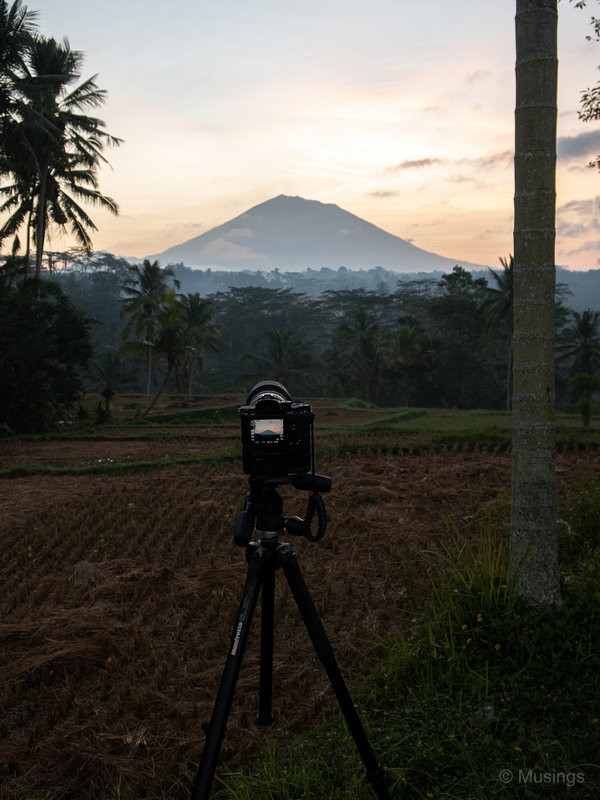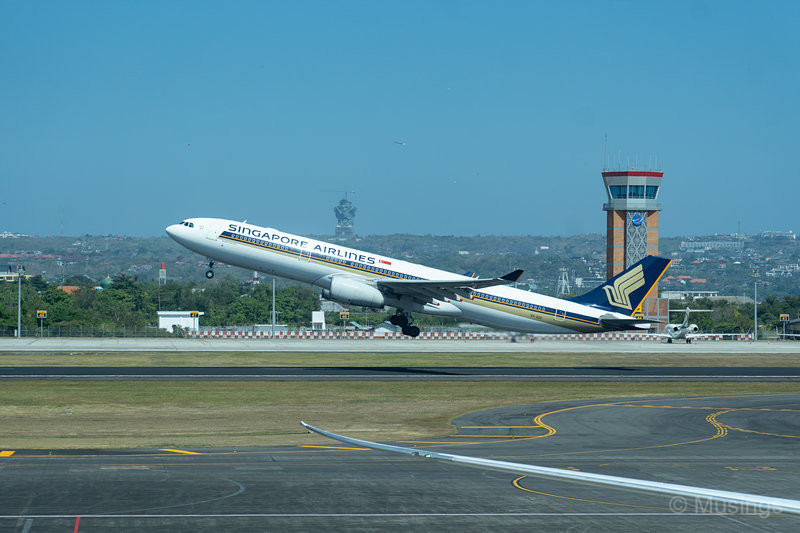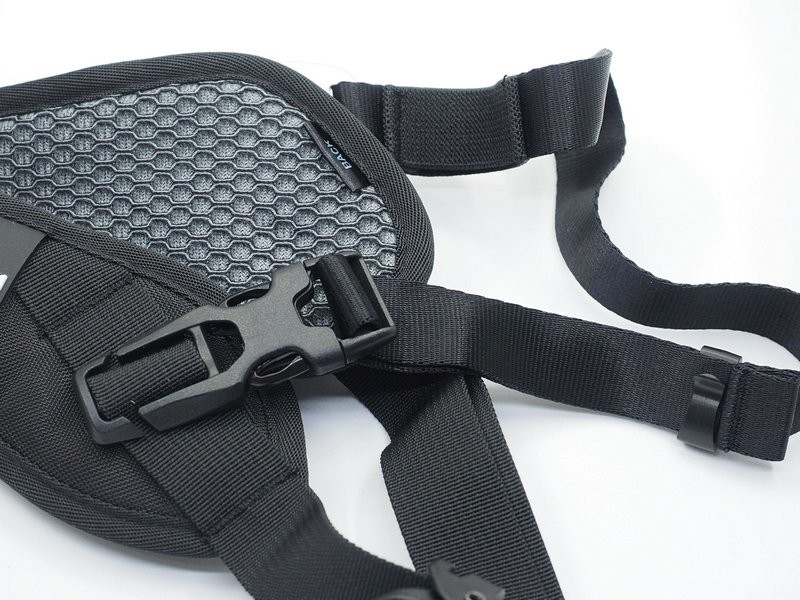There were three lenses – the FE 24-105mm f4.0, FE 16-35mm f4.0 and the adapted Tamron 70-200mm f2.8 – accompanying the Sony A73 on its maiden overseas outing: and I ended up using just two lenses: and about 99% of the shots I took on the Sony A73 was on just one of those two lenses! I didn’t have a real use for the wide-angle FE 16-35mm f4.0 after all, aside from taking those night shots of the villa and also of the padi fields in the day time, as the 24mm starting on the FE 24-105mm f4.0 was already easily wide-enough for almost everything I was shooting. Next time, I’ll leave the wide angle zoom lens at home.

Not being able to use the Tamron 70-200mm f2.8 was a real loss though; and it was totally my fault. I’d forgotten that the Sigma MC-11 adapter was still mounted with the Sigma 70-300mm f4-5.6 that just arrived a few days before departure, and thus left home without the adapter. I literally smacked myself on the head when I realized my omission when we were unpacking at the villa after we’d arrived. The 70-200mm f2.8 had been intended for at least two photo outings: at the Zoo, and – more importantly – for the street photography segment with Taksu Photos. Hence, I had to make do with the longest end of the 24-105mm, and coupled with a relatively slow f4.0 aperture, the lens really struggled to get the kind of close-up and perspective I wanted for those people portraits at the local market.
Still; the Sony A73 has come out of its first trip admirably. Its much vaunted battery life is really as good as reviewers have said. The most intensive session was on day 8’s photographic trip where I shot about 900 exposures over five hours, with a lot of chimping and framing using the LCD especially during the Mt. Agung sunrise segment. But the battery meter was still at 40% when I’d finished at 10:30AM.
Some of the features were really effective too, including the different drive speeds (Low, Mid, High and High+), and the different AF modes (wide, center, zone, spot, flexible-spot). Of the other features: I tinkered around with exposure bracketing to try creating HDR images in Photoshop, but the A73’s huge 14.7EV dynamic range – compared to the 12.7 EV range on my E-M1 Mark I – made it possible to create those HDR-like photos from a single exposure literally, blogged here already. The C-AF +Tracking on the other hand got me mixed results. Maybe I’m expecting too much, but while the AF at the focusing point was pretty much spot-on the subject each time I released the shutter, the tracking seemed occasionally susceptible to mistaking other objects in the frame as the principal subject I was following. It’s likely user-error in large part too, since I don’t do action photography normally – so something I have to keep practising!

Less pleasing though was how the Sony A73 handled very rough off-road buggy drive on day 5. I was unaware how bumpy the drive would be, so the poor A73 got bounced around the vehicle quite a bit, resulting in some body paintwork on the top left panel getting chipped off. Heart-pain. Ironically, I do have a cheapo steel base cage for the A73 that would have easily protected the camera in this instance: but I’d also neglected to bring that along. Sigh – hard lesson learned again.
I’d also picked up the BlackRapid Breathe Curve Camera Strap just for this trip – it wasn’t easy deciding between this or the much more popular Peak Design straps that every other person seems to be using. The BlackRapid strap has a huge ace up its sleeve though: a secondary strap that goes underneath the armpit that supposedly keeps the shoulder pad from moving. But it works like a charm. I’ve got four sling-type straps now: the BlackRapid RS4, the Joby Pro, the BosStrap and this new BlackRapid Breathe Curve- and the latter is easily now the most effective one of the lot.

The last gear that came for its first rodeo was the Xiaomi Mijia 4K Action Camera that I picked up for cheap specifically for the off-road buggy drive, and it arrived alongside its accessories just days before we left. The camera’s easy to operate, seems to be built like a tank, and has pretty good specs. However, the unit isn’t waterproof and requires that you get a separate housing for it. A separate purchase wasn’t the issue: but I’d also underestimated the amount of heat these action cameras generate – and when put into a waterproof housing, condensation inevitably results. A good amount of the buggy ride footage was ruined because of condensation in the small air cavity between the case’s lens protrusion and the unit itself – though I still thankfully have enough video footage to work with (the 4K camera was kept running for half of the ride and I had about 40 minutes of video). And the housing also muffs up the audio from the footage too.
Still, the cost of this action camera was roughly a third of what I’d pay for the Hero 5 Black, and I’m only using it sparingly. Can’t complain too much!
So finally, here’s the picture account for the Bali trip:
No. of shots triggered on the Sony A73: 4,500
No. of shots triggered on the Canon G7X Mark II: 250
No. of shots triggered on the Samsung Galaxy S8+: ~800
So, about 5,550 pictures taken altogether, of which I’ll be keeping 3,231 of them. As for videos, I took about 33.4GB of 4K video on the S8+ and Xiaomi Mijia 4K camera – but I’ll have to find time to wade through all of them! Here’s a fun segment though during our buggy ride where we had to slow down lest we ran over a very brave chicken that’d crashed into our path:
And lessons for the next trip:
Bring the A73 and just two zoom lenses: the 24-105mm f4.0, and the Tamron 70-200mm f2.8.
Drop the filters, really. Brought them over again, and didn’t touch them – again.
Don’t forget the Sigma MC-11 adapter, duh.
Bring the A73 base cage: it’ll save the A73’s bacon, or its paint work at least!
Leave the A73 battery grip at home, unless I’m doing street photography again.
Recent comments